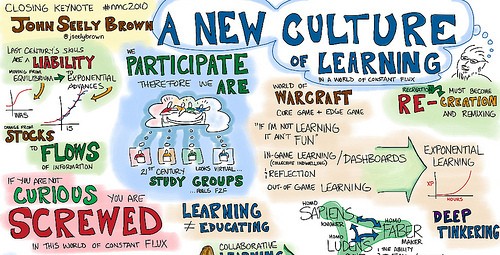Recently I encountered a somewhat challenging issue with my class. Many of the students were being slammed in other courses, and I knew I wasn’t going to get their best work if I rushed them. I offered a submission week – idea courtesy of Garth Nichols; a mentor, colleague and friend. Students could share their learning using Voicethread until Thursday before the March Break. The reason I chose Voicethread is that I put a lot of energy into having students share their learning in order to have a better understanding of the Essential Questions and Enduring Understandings. With the submission date so close to a break, I knew that many students could be away since a large number travel overseas to return home. Using Voicethread allowed students to record their learning, share it with the group, and then listen to at least two other groups in order to pose questions, offer opinions, and make connections. Despite having most of students in class that day, one was a 12 hour time zone away, and was still able to participate in the discussions, pose his questions and share in the learning. I would have liked to try Google Hangouts for this type of activity however with the time zone difference that would not have been possible.
[wallwisher key=’nl98p5nc8x’ width=’100%’ height=’480′]
The learning that lead to the sharing involved students received an invitation to a padlet wall – formerly wallwisher and then exploring personal and public identities as part of the AP French curriculum from College Board. The themes and essential questions was the only information provided on the wall. Students then used Google Moderator to make flexible groups, some opting to work alone based on personal interest. Students had to find an article, video or audio source and they shared it both on the wall and via Diigo. Students created vocab lists based on words they either did not know, or thought demonstrated an advanced vocabulary. They were asked to paraphrase the article, show connections among themes of the unit and others studied prior, share their opinion and the societal impact of the event they explored and create a Voicethread following the checklist provided.
This mini-project allowed me to assess for learning though I could very well have assessed for learning with regard to their reading and aural comprehension skills, as well as their communication and application skills. Sending the grammar home as a flipped-classroom task allows students to explore and then have it explained if needed. I take advantage of YouTube videos and online grammar explanations for this learning. Students move through the grammar at their own pace, and there are always two options in order to avoid too much fragmentation. Students display their learning with written notes, dialogues, skits, that demonstrate the formation of the language structure but more importantly why you use the structure – specific incidents in which you could take advantage of the structure. The most recent was the use of the subjunctive in the present tense, in which students highlighted that if someone of disinterest were to flirt when they were traveling, they would use the structure to politely disuade their suitor. They must show mastery of the structure twice and they are asked to apply it to the next project where possible.
Here are some useful resources on implementing the flipped classroom and here is another one specific to languages with links to other useful resources.

We have been playing with Voice Thread extensively this term and really enjoy it as well. Have you checked out – https://voicethread.com/about/library/. Some really interesting integration ideas in there. I am playing with the idea of using them for portfolios . A great way to capture student learning and spark discussions as well.